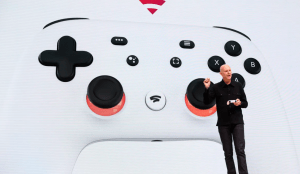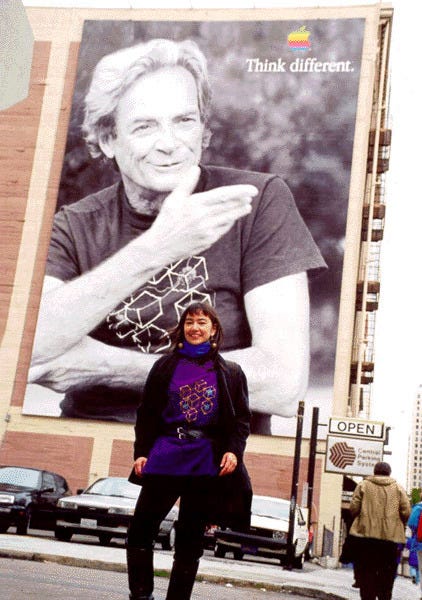games & graphics
How EA is taking esports to the masses
What if you took a video game with an obsessively cultish following and made it the basis for a reality TV show? That’s what Electronic Arts, the video game publishing behemoth, recently did with one of its most popular titles, The Sims, a game that first became a phenomenon over 20 years ago when it gave players the ability to build and personalize worlds and populate them with characters who act and behave much like we do.
The result was The Sims Spark’d, which debuted on TBS’s Eleague Friday night lineup and BuzzFeed‘s Multiplayer YouTube channel last month in a four-episode series. The show felt much like Lego Masters or The Great British Baking Show, complete with a host—American Idol finalist Rayvon Owen—a set of judges, and Sims fanatics and YouTube influencers (an ethnically diverse mix of mostly females) who were divvied up into groups and forced to come up with story lines and create characters and worlds under extreme time constraints and other limitations. (And, of course, get along with each other.)
Source: Fast Company
A Dogfight Renews Concerns About AI’s Lethal Potential

IN JULY 2015, two founders of DeepMind, a division of Alphabet with a reputation for pushing the boundaries of artificial intelligence, were among the first to sign an open letter urging the world’s governments to ban work on lethal AI weapons. Notable signatories included Stephen Hawking, Elon Musk, and Jack Dorsey. Last week, a technique popularized by DeepMind was adapted to control an autonomous F-16 fighter plane in a Pentagon-funded contest to show off the capabilities of AI systems. In the final stage of the event, a similar algorithm went head-to-head with a real F-16 pilot using a VR headset and simulator controls. The AI pilot won, 5-0.
Source: Wired
How Intel will keep Moore’s Law cranking for years to come

Moore’s Law, the observation that the number of transistors on a computer chip doubles every 24 months, has taken a beating as progress miniaturizing circuitry falters. But chip giant Intel has plotted a course to keep the idea alive with a plan to pack 50 times as many transistors onto processors than is possible today.
Source: CNET
Children Stream on Twitch—Where Potential Predators Find Them

According to Twitch’s Terms of Service, you have to be 13 to stream on the platform. But a WIRED investigation turned up dozens of Twitch accounts seemingly operated by children under that age, including another girl who admitted to being 11. In their videos, which crop up every few minutes under Twitch’s Just Chatting section, apparent children livestream themselves talking while playing games like Fortnite, performing dances popular on TikTok, or sitting at home and communicating with a small number of viewers. WIRED has viewed several messages from viewers to these apparent children containing inappropriate comments, questions, or demands, and identified some accounts that follow multiple apparent children.
Why big tech is betting big on gaming in 2020

At more than $150 billion in annual revenue, the global game industry is now more than twice the combined size of the worldwide film box office ($42.5 billion in 2019) and the planet’s recorded music business ($19.1 billion in 2018, including streaming). Roughly 2.5 billion people play games, even if many don’t think of themselves as “gamers” (yes, Candy Crush counts). Big tech has taken notice. Over the last few years, Amazon, Apple, Facebook and Google have each joined Microsoft in making gaming a strategic priority. In 2020, games will become even more important to their bottom lines.
Source: Protocol
‘We can’t scale humans’: Why startups are raising millions to build AI avatars
Startups are creating unsettling human-like avatars to take over customer service jobs—or even act as a stand-in for celebrities.
Source: Fast Company
The mass Twitch exodus: Why streamers are leaving
:format(webp)/cdn.vox-cdn.com/uploads/chorus_image/image/66172676/kwhitman_200124_0990_final_2040x1360px.0.jpg)
A few years ago, if you were a streamer, you were on Twitch — simple as that. Outside of a few select content creators, everyone who wanted to be a streamer had to use Twitch’s platform. It was the only viable game in town. But over the last year, the streaming landscape has changed. Twitch still remains the largest streaming platform, but some of its biggest creators are signing exclusive contracts with platforms like Mixer, Caffeine, YouTube, and Facebook Gaming. Which leaves fans with a question: Why? The answer is a lot more complicated than you might think.
Source: Polygon
Atari is making Atari hotels now
:format(webp)/cdn.vox-cdn.com/uploads/chorus_image/image/66174718/atari_01.0.jpg)
Atari’s hotels will, of course, be video game themed, featuring “fully immersive” virtual reality and augmented reality experiences, and venues at select locations designed to accommodate esports events. As seen in renders of the hotels, the iconic Atari logo will feature prominently in the design of the company’s buildings.
Source: Polygon
Snap Deepens AR Push With Lens Studio Update, Including New Templates And Landmarkers
If there was any doubt before, Q3 2019 has made clear that Snap is betting heavily on Augmented Reality (AR). Earlier this month, Snap announced a $1B fundraise to invest in AR startups. A week later, the Snapchat parent company unveiled the third-generation of Spectacles, its AR sunglasses, which are now available for pre-order. Snap is continuing its emphasis on the AR ecosystem in an announcement today: a major update to Lens Studio, the company’s desktop app for producing augmented reality “Lenses” on the Snapchat messaging platform. The update includes 14 new Landmarker locations, six new templates, and an updated UX that highlights new offerings and provides step-by-step tutorialization for beginners.
Source: Forbes
Fortnite Maker Wants to Sell More Games and Build a Platform to Do It

Epic Games wants to change the way people buy video games, but it faces the dominance of Steam, the primary destination for online game purchases.
Source: The New York Times
Inside the luxury industry’s fight for millennials’ wallets
Louis Vuitton, Gucci, and Hermès are battling for young consumers. Will their strategies—which include everything from podcasts to video games—pay off?
Source: Fast Company
Designers Are Imagining Video Games Without Guns

At a time of enormous uncertainty, widespread gun violence, and climate crisis, maybe it’s time for a new era of mainstream games that provide an escape from conflict, rather than reveling in it. Game designer Robin Hunicke has been thinking about this her whole career. Starting out on The Sims series, she was the producer of Journey, one of the most beautiful and thoughtful adventure games ever made. Now, at her development studio Funomena, she and her team are working on peaceful, interesting video game projects, such as the virtual reality experience Luna, an interactive fairy tale set in an enchanted forest, where players can create their own relaxing aural environments. She thinks the time is right for this kind of approach to enter the mainstream.
Source: OneZero
The Paradox of the Incredible Shrinking Comic-Con Expansion

If you wanted a sneak peek of what the future of television looks like, you couldn’t ask for a better one than this year’s Comic-Con. WarnerMedia pulls Friends off Netflix to try to attract people to HBO Max, its forthcoming streaming service; NBCUniversal does the same with The Office. Meanwhile, with its purchase of Fox, Disney buys out Comcast and takes full control of Hulu, resulting in the company owning two streaming services outright (the other being Disney+)—each with its own legacy catalog, each with its own originals pipeline. Add in Apple, DC Universe, and whatever else, and you’ve got some hard decisions to make.
That changes the calculation of fandom considerably. Comic-Con, at its core, is still about personal investment in pop culture, and that investment happens at all levels. You’ve got people dedicated to a character, to a movie, to a game, to a narrative universe—and, increasingly, to the platforms that deliver those stories and universes. Don’t believe me? Read a psychographic profile of Generation Z; YouTube and Netflix far outrank Disney and Nintendo in perceived coolness. (I regret to inform you that this one, which Google commissioned in 2017, is called “It’s Lit.“) While that reputation is part predicated on the stuff that comes out of those pipes, the fact remains that the pipe itself has a role like never before. Just like Comic-Con, it’s all getting bigger—and it’s all getting so, so much smaller.
Source: Wired
Now Some Families Are Hiring Coaches to Help Them Raise Phone-Free Children
Parents around the country, alarmed by the steady patter of studies around screen time, are trying to turn back time to the era before smartphones. But it’s not easy to remember what exactly things were like before smartphones. So they’re hiring professionals. A new screen-free parenting coach economy has sprung up to serve the demand. Screen consultants come into homes, schools, churches and synagogues to remind parents how people parented before.
Source: New York Times
Netflix is adapting the video game ‘Cuphead’ into an animated show
One of the most unique-looking games in years, ” Cuphead,” is getting its own Netflix show. The game is a stunner, featuring artwork pulled straight out of a 1930s-era cartoon. That’s due to it being hand-drawn across several years by a small crew. The new show is also being hand-drawn, albeit not on paper, by Netflix’s animation team. “We are not going to be animating this [ourselves] because it would never be finished,” one of the game’s developers, Chad Moldenhauer, told IGN.
Source: Business Insider
Black Female Gamers Are Claiming Their Space at Last
Black women are among the least represented demographic in the $135 billion global gaming industry. They suffer from a double disadvantage — of race and gender. Only 1 percent of gaming industry professionals identify as African or African American, according to the latest International Game Developers Association Satisfaction Survey. Women of any race make up only 27 percent of the industry. It’s little surprise, then, that none of the world’s 20 top-earning female gamers are Black. But an emerging generation of millennial women of color is now beginning to carve out space for others like themselves. They’re building a network of support organizations that never existed before, aimed at facilitating, encouraging and training aspiring female gamers of color to reach new heights in the industry.
Source: OZY
Tech giants like Google and Microsoft are battling to become the Netflix of gaming

Every major tech company, from Apple to Amazon to Google, is trying to create a “Netflix of gaming” service. The idea is simple: Stream high-quality games to any device, regardless of how much processing power that device has. The potential for such a service is massive, but there are major technical hurdles to overcome — from latency to bandwidth caps to slow internet speeds. The CEO in charge of Take-Two Interactive, the publisher of “Grand Theft Auto” and “NBA 2K,” spoke to those hurdles and his own skepticism with video game streaming in an interview with Business Insider earlier this month.
Source: Business Insider
Next Up on Your Twitch Stream: Chess?

Chess.com is courting a wider audience by turning chess into a poker-like spectator sport. In 2017, Chess.com took over the United States Chess League, the only nationwide chess league in the country at the time. It was renamed the Professional Rapid Online Chess League (PRO Chess League) and started accepting teams and players representing cities from around the world. In its inaugural season, the league drew in 48 teams, each with 8–16 players. There were so many people ready to compete that the league had to be cut down to 32 teams the year after. As the league commissioner Greg Shahade put it, that many players was “a bit too large and chaotic.”
Source: OneZero
What Does ‘Posthuman Design’ Actually Mean?

According to design educator Anastasiia Raina, it’s not too early to begin considering what the roles of designers might be in a future where tasks like layout and production are completely automated. What would “human-centered design” mean in a future where our client-partners are robots, or even non-human lifeforms?
This is a question Raina poses in her new undergraduate course at RISD titled Design in the Posthuman Age. The curriculum follows the lines of inquiry generated by designers and futurists before her — theorists like Cyborg Manifesto’s Donna Haraway or Dunne & Raby, authors of Speculative Everything. To Raina, Posthuman Design is not so much an aesthetic as a design methodology with roots in Postmodernism.
Source: AIGA Eye on Design – Medium
The Female Supercomputer Designer Who Inspired Steve Jobs

It started with a T-shirt.
The product designer and mechanical engineer Tamiko Thiel was working for the Cambridge, Massachusetts, company Thinking Machines. She and her colleagues were building a supercomputer that proposed a radical new concept. Instead of using one giant processor to crunch large amounts of data, they were going to use thousands of processors that would tackle little parts of the data-crunching one by one. It was the early 1980s, and Thinking Machines was trying to build an artificially intelligent machine based on the human brain. As the project’s lead designer, Thiel was charged with the question: What should this new kind of technology look like?
Source: Fast Company